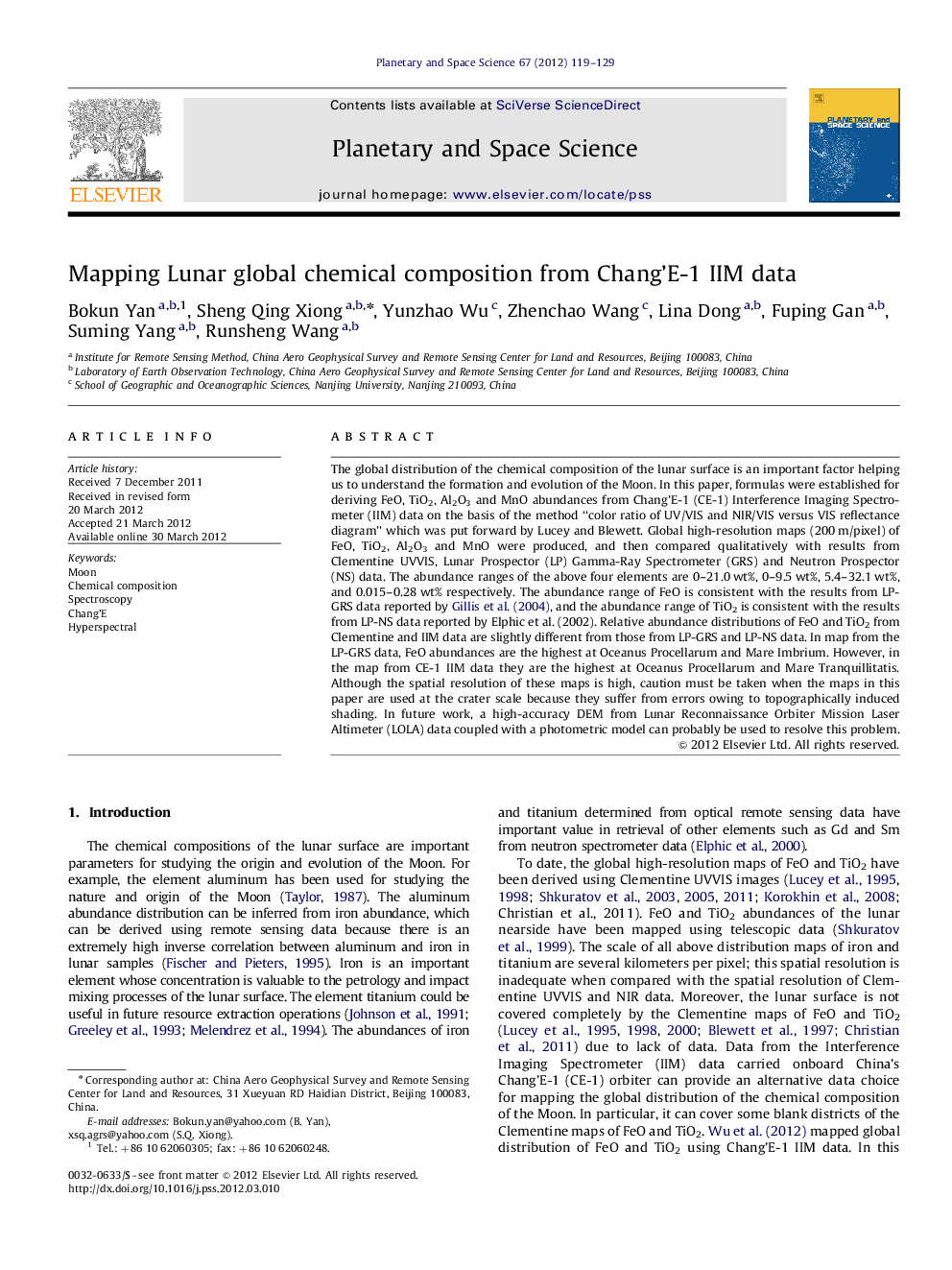| کد مقاله | کد نشریه | سال انتشار | مقاله انگلیسی | نسخه تمام متن |
|---|---|---|---|---|
| 1781533 | 1022286 | 2012 | 11 صفحه PDF | دانلود رایگان |

The global distribution of the chemical composition of the lunar surface is an important factor helping us to understand the formation and evolution of the Moon. In this paper, formulas were established for deriving FeO, TiO2, Al2O3 and MnO abundances from Chang'E-1 (CE-1) Interference Imaging Spectrometer (IIM) data on the basis of the method “color ratio of UV/VIS and NIR/VIS versus VIS reflectance diagram” which was put forward by Lucey and Blewett. Global high-resolution maps (200 m/pixel) of FeO, TiO2, Al2O3 and MnO were produced, and then compared qualitatively with results from Clementine UVVIS, Lunar Prospector (LP) Gamma-Ray Spectrometer (GRS) and Neutron Prospector (NS) data. The abundance ranges of the above four elements are 0–21.0 wt%, 0–9.5 wt%, 5.4–32.1 wt%, and 0.015–0.28 wt% respectively. The abundance range of FeO is consistent with the results from LP-GRS data reported by Gillis et al. (2004), and the abundance range of TiO2 is consistent with the results from LP-NS data reported by Elphic et al. (2002). Relative abundance distributions of FeO and TiO2 from Clementine and IIM data are slightly different from those from LP-GRS and LP-NS data. In map from the LP-GRS data, FeO abundances are the highest at Oceanus Procellarum and Mare Imbrium. However, in the map from CE-1 IIM data they are the highest at Oceanus Procellarum and Mare Tranquillitatis. Although the spatial resolution of these maps is high, caution must be taken when the maps in this paper are used at the crater scale because they suffer from errors owing to topographically induced shading. In future work, a high-accuracy DEM from Lunar Reconnaissance Orbiter Mission Laser Altimeter (LOLA) data coupled with a photometric model can probably be used to resolve this problem.
► The distribution map of MnO has not been produced from other optical remote sensing data.
► Spatial resolution of the global chemical composition maps produced is high (200 m per pixel).
► The abundance ranges of the above four elements are 0–21.0 wt%, 0–9.5 wt%, 5.4–32.1 wt%, and 0.015–0.28 wt%.
Journal: Planetary and Space Science - Volume 67, Issue 1, July 2012, Pages 119–129